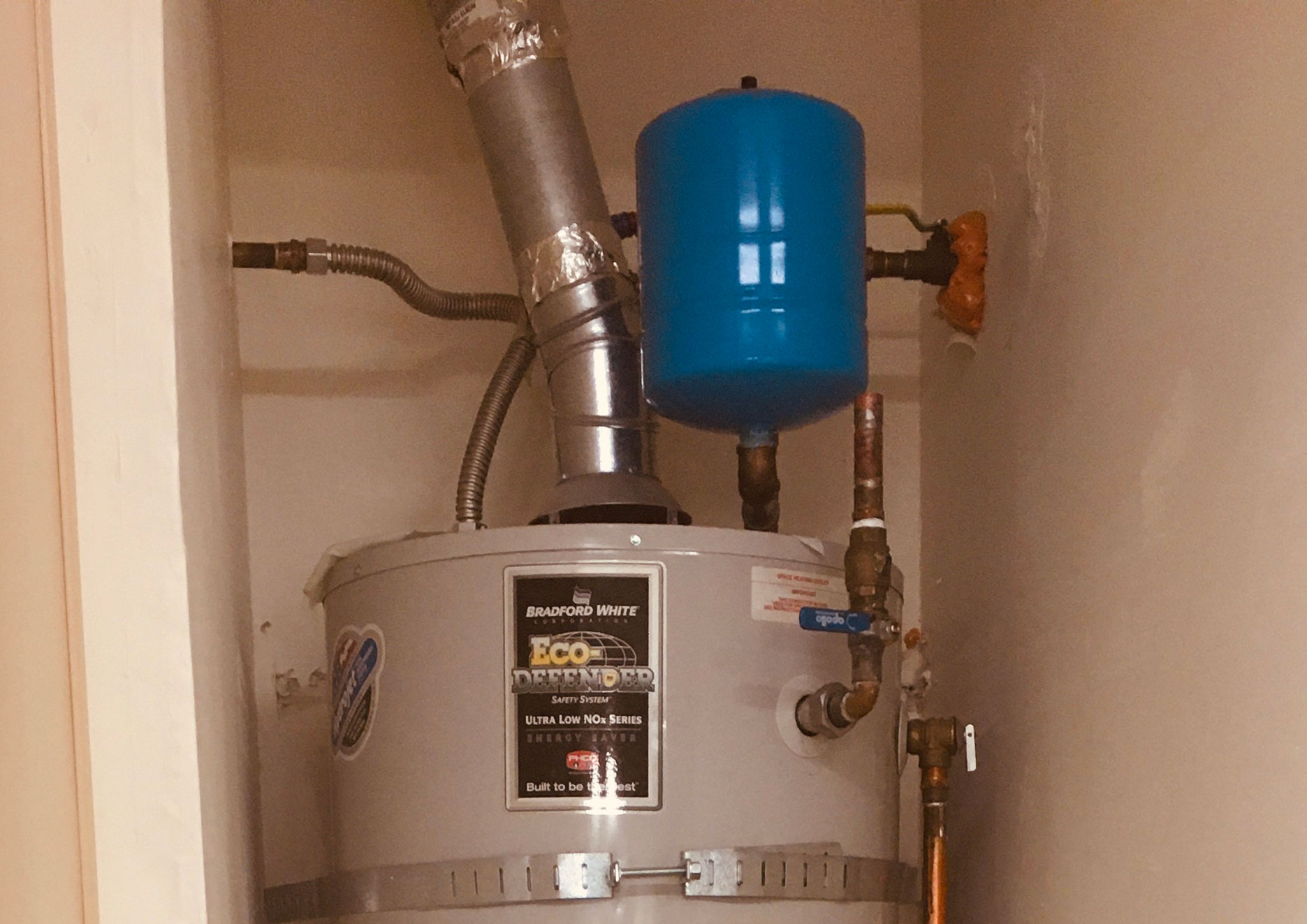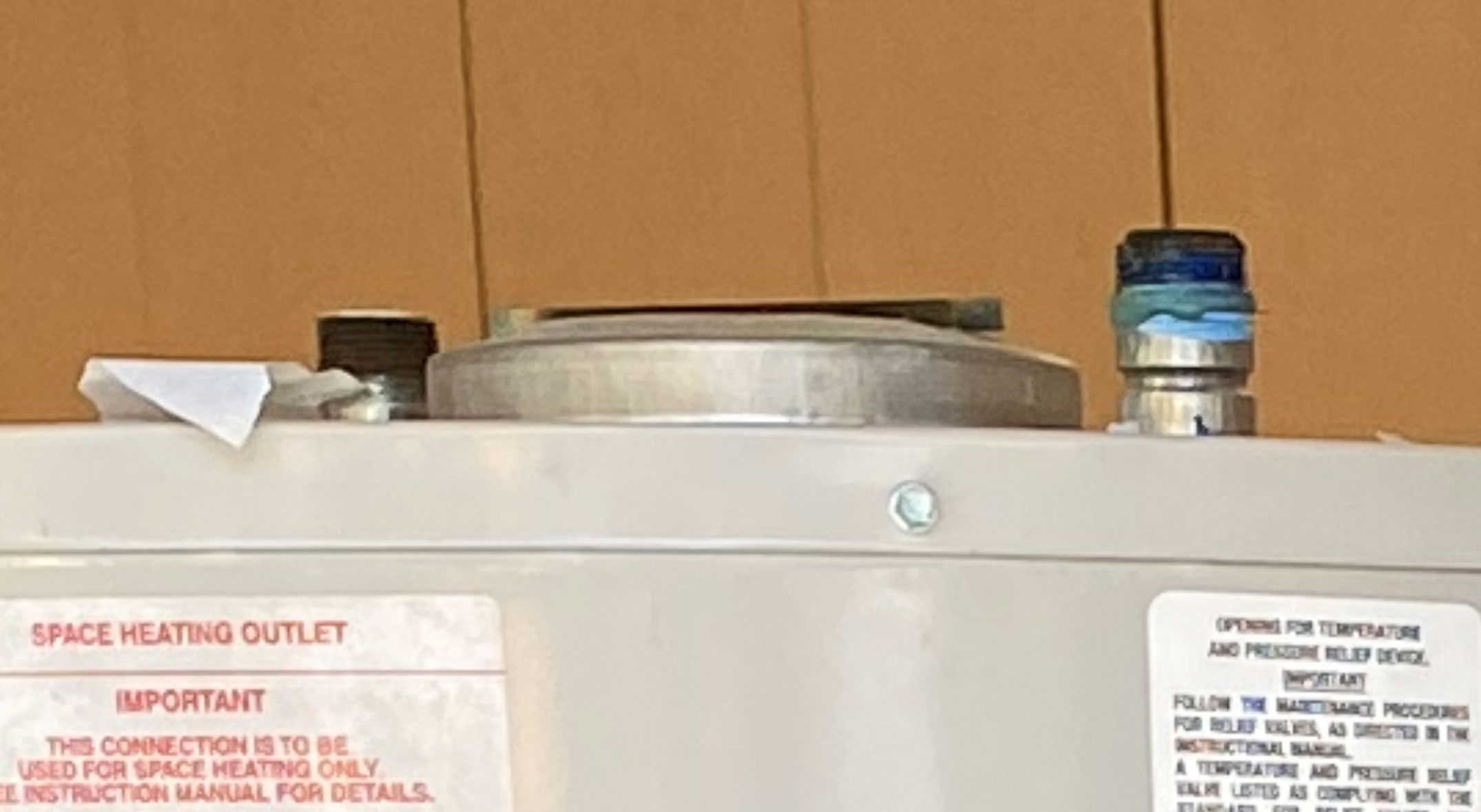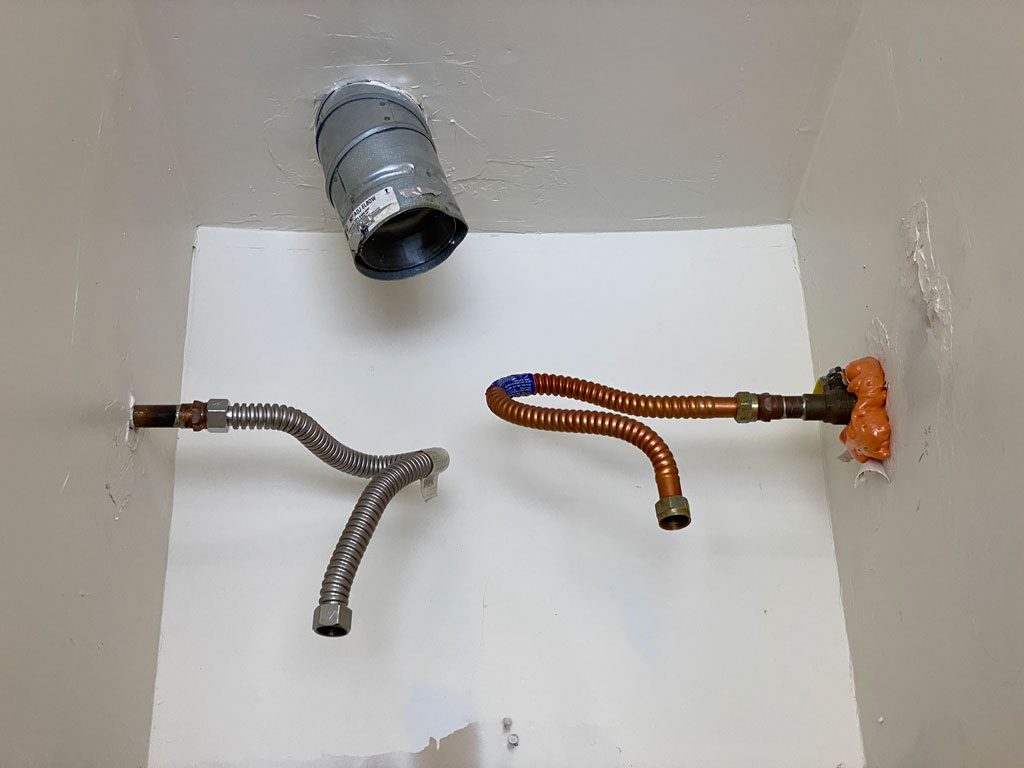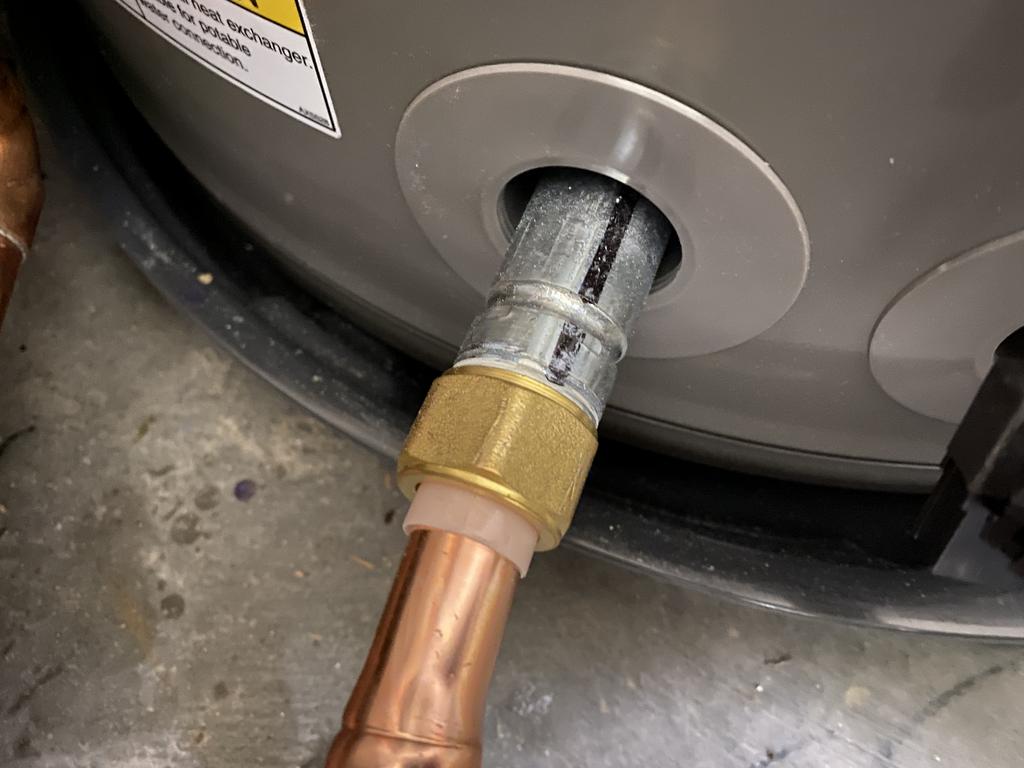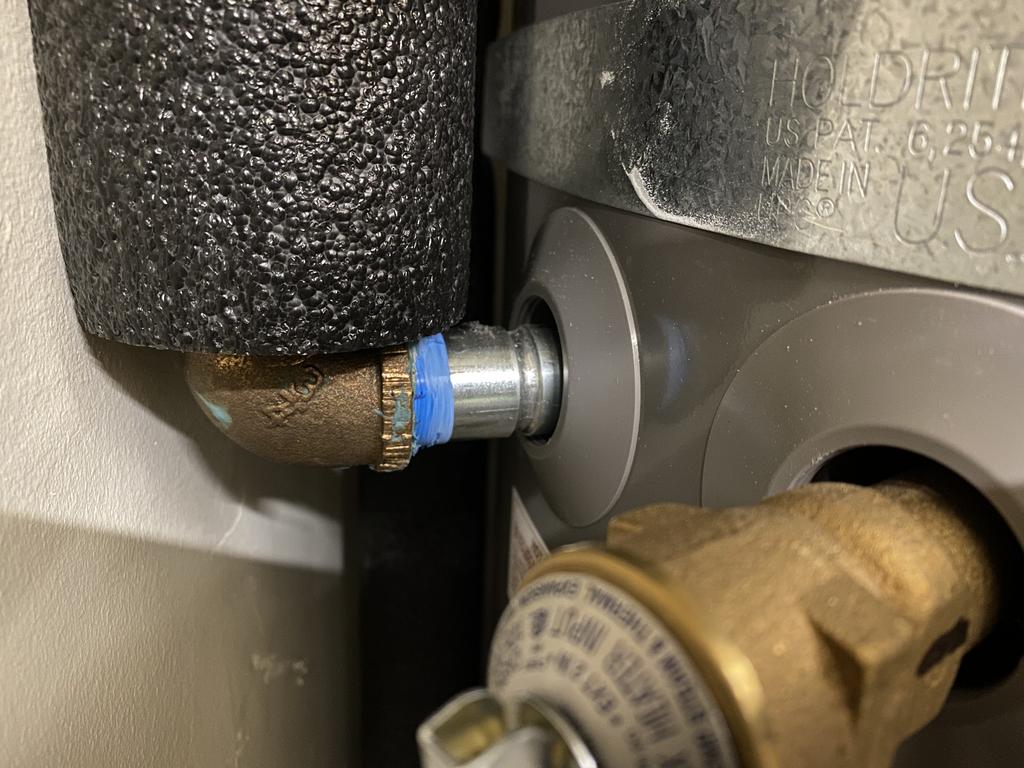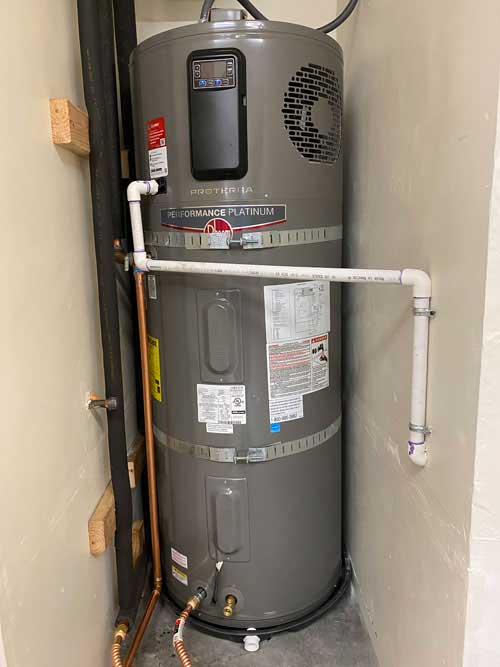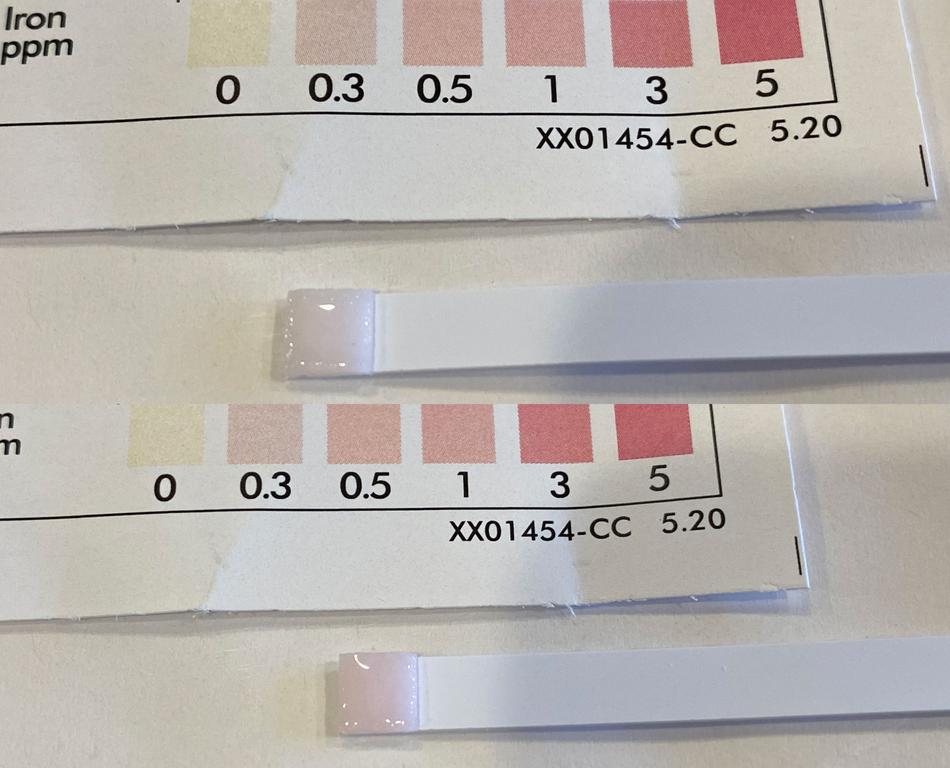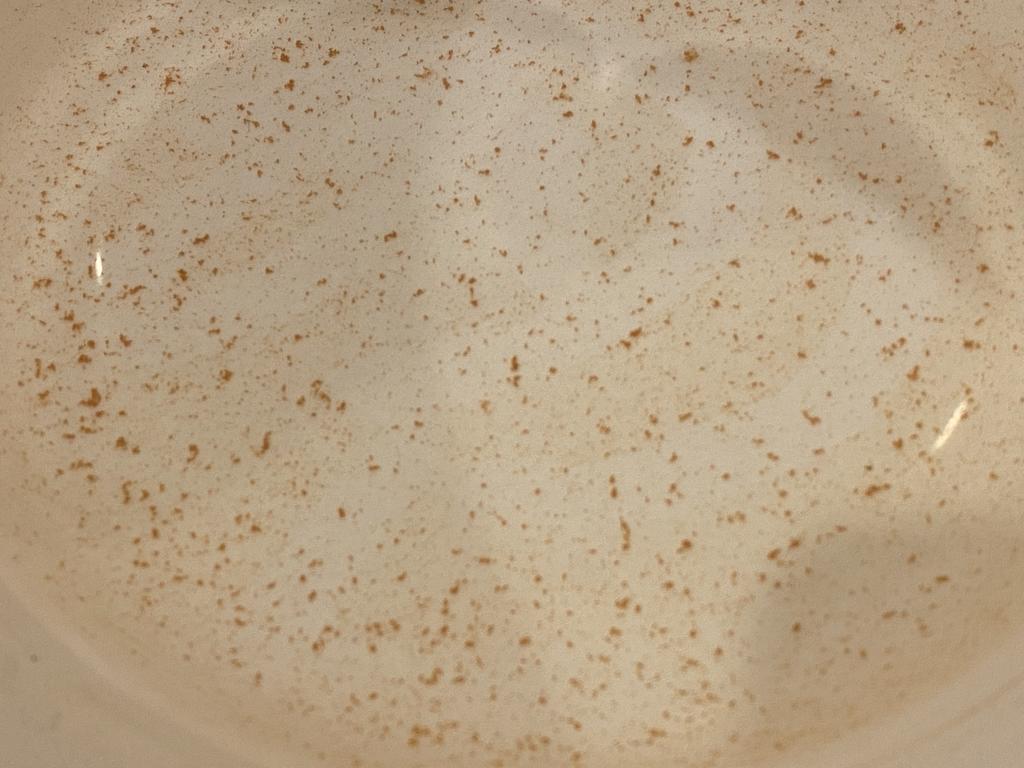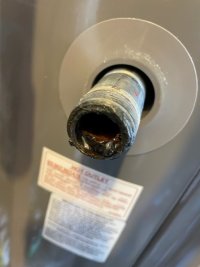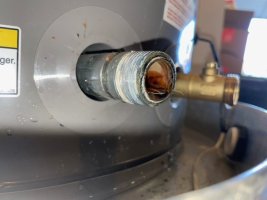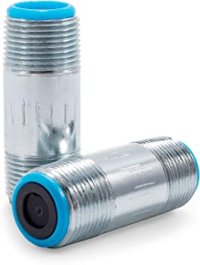Chris-A
New Member
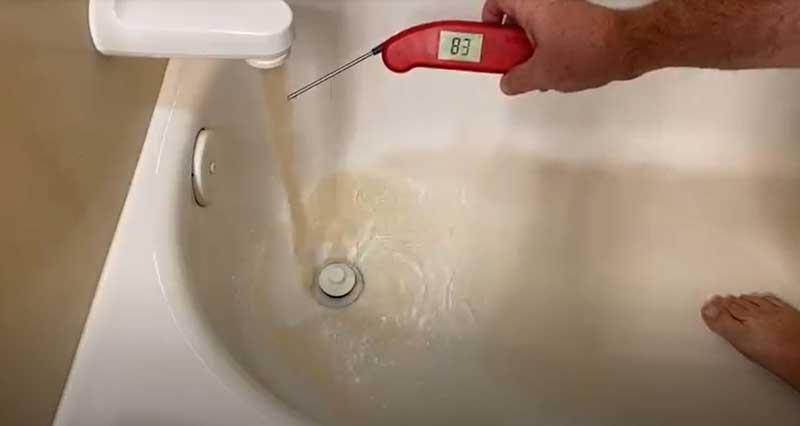
We hired a licensed plumber to replace a 10 year old gas HWH with a Rheem Performance Platinum ProTerra Hybrid Electric Water Heater. I should backup and say that a licensed electrician first installed a new electrical subpanel (we had no room for new circuits) and a new 240v 30 amp line for the electric HWH.
Our condo is 25 years old. To the best of my knowledge, the builder used copper pipes throughout. We did not have a problem with discolored hot water before this project and we do not have any discoloration on the cold water side. There has been no city work on the water supply. We have the same cold water supply leading to the HWH (meter, pressure reducing/backflow valve, house shutoff valve, piping, and shutoff at the wall above the HWH) and the same hot water lines running throughout the condo.
The old HWH had two simple connections: a flexible copper connector running from the cold water supply to a T-fitting above the tank where a thermal expansion tank was installed, and a flexible stainless steel connector running from the hot water outlet to the condo hot water system.
It took two flexible copper connectors and perhaps 22' of new copper piping to connect this Rheem HWH. The cold water inlet is located 5" above the floor on the front-left side of the tank, the hot water outlet is 3'-6" above the floor and further to the left from the cold water inlet. We still have a thermal expansion tank (new) but the addition of a thermostatic mixing valve so the unit can run very hot but deliver safe water to the condo. (At this time, we are only running the HWH at 120*F.)
Here's the problem. Shortly after installation, we begin to notice dark orange water coming out of any hot water faucet in the condo. Turn on the hot water valve to the bathtub, a slug of clear, cold water comes out first, and as warm water arrives it turns dark orange for a few seconds. This is especially pronounced in the morning when we've not used any hot water overnight, but also happens to a lesser extent during the day when we've not used hot water for 4-6 hours.
I tried draining the tank, refilling it, draining it a second time, and refilling it. Same result the next morning.
I have sampled water from the T&P valve and it runs clear.
When asking the plumber, his response was "bad pipes in your house." That does not make sense to me because the only changes made were between the cold water inlet and the hot water outlet above the HWH, and we had no problem with discoloration before the installation.
Here are video links showing my description of the installation and the discolored water discharge.
https://drive.google.com/file/d/1zBq4GS0dfUNOcPr9R4t8MwgOrVQ9owEw/view?usp=sharing
https://drive.google.com/file/d/19Ubz0COc8fOfZs2yb6_Az884AM649ArL/view?usp=sharing
I've shared these videos and more with Rheem technical support...no response from them yet.
Does anyone out there have an idea about the cause of this?

